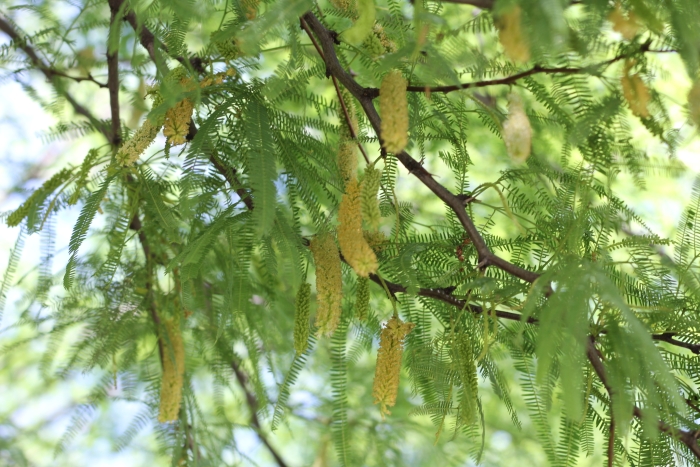White Carob Tree
(Prosopis alba)
White Carob Tree (Prosopis alba)
/
/

Romi Galeota Lencina
CC BY 4.0
Image By:
Romi Galeota Lencina
Recorded By:
Copyright:
CC BY 4.0
Copyright Notice:
Photo by: Romi Galeota Lencina | License Type: CC BY 4.0 | License URL: http://creativecommons.org/licenses/by/4.0/ | Rights Holder: Romi Galeota Lencina | Publisher: iNaturalist | Date Created: 2020-11-29T11:27:18-08:00 |




















Estimated Native Range
Summary
Prosopis alba, commonly known as White Carob Tree, is a deciduous tree native to the Gran Chaco region, which includes dry forests, savannas, and thorn scrub habitats in South America. It typically grows to a height of 5 to 15 meters (16 to 49 feet) with a trunk diameter of up to 1 meter (3.3 feet). The tree has a short trunk and a wide, globular canopy that can reach 10 meters (33 feet) in diameter. The bark is thin, brown-grayish with streaks, and contains tannins. White Carob Tree produces small, greenish-white or yellowish bisexual flowers. The fruits are elongated seedpods, up to 20 cm (7.9 inches) long, containing brown seeds and a sweet, floury paste high in sugar content.
White Carob Tree is valued for its drought tolerance and ability to thrive in arid conditions, making it suitable for xeriscaping. It is used ornamentally for roadside planting and as windbreaks. The tree’s ability to produce abundant fruit, even in years of drought, is a significant benefit. Its sweet pods can be used as fodder or processed into flour for human consumption. In cultivation, it requires full sun, low water, and well-drained soils. However, it can become invasive outside its native range, so gardeners should check local regulations before planting.CC BY-SA 4.0
White Carob Tree is valued for its drought tolerance and ability to thrive in arid conditions, making it suitable for xeriscaping. It is used ornamentally for roadside planting and as windbreaks. The tree’s ability to produce abundant fruit, even in years of drought, is a significant benefit. Its sweet pods can be used as fodder or processed into flour for human consumption. In cultivation, it requires full sun, low water, and well-drained soils. However, it can become invasive outside its native range, so gardeners should check local regulations before planting.CC BY-SA 4.0
Plant Description
- Plant Type: Tree
- Height: 20-40 feet
- Width: 15-30 feet
- Growth Rate: Moderate
- Flower Color: Yellow, Cream
- Flowering Season: Spring, Summer
- Leaf Retention: Deciduous
Growth Requirements
- Sun: Full Sun
- Water: Low
- Drainage: Medium
Common Uses
Bee Garden, Bird Garden, Butterfly Garden, Drought Tolerant, Edible*Disclaimer: Easyscape's listed plant edibility is for informational use. Always verify the safety and proper identification of any plant before consumption., Low Maintenance, Showy Flowers, Street Planting
Natural Habitat
Native to the Gran Chaco region, including dry forests, savannas, and thorn scrub habitats
Other Names
Common Names: Algarrobo Blanco, Ibopé, Igopé
Scientific Names: , Prosopis alba,
GBIF Accepted Name: Prosopis alba Griseb.